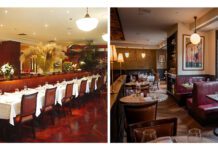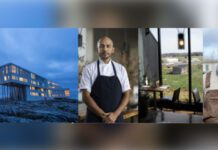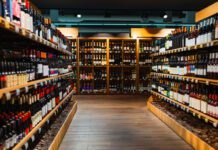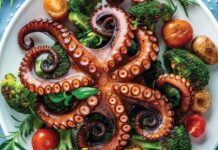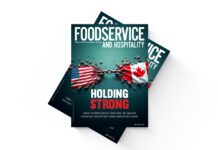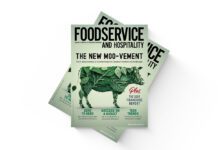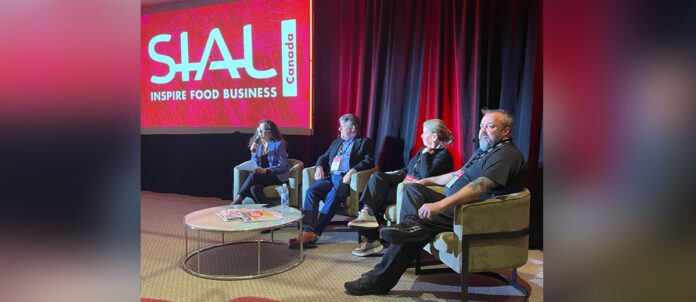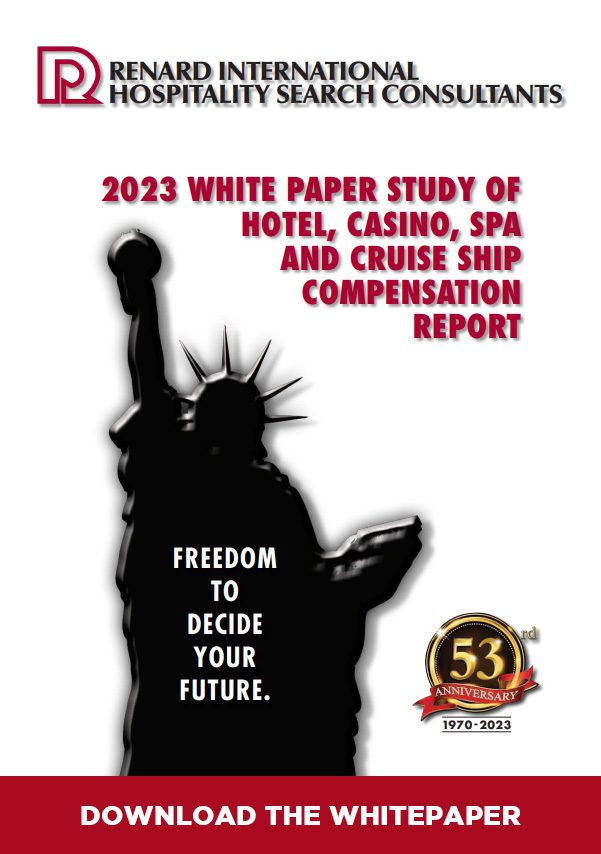TORONTO — SIAL Canada 2025 opened its doors at Toronto’s Enercare Centre last week and Canada was named the Country of Honour for the first time in the show’s history. More than a symbolic gesture, this recognition served as a timely rallying point for a nation grappling with economic headwinds, geopolitical instability, and supply-chain uncertainty. With more than 1,000 exhibitors and 23,000 attendees from more than 70 countries, the three-day showcase highlighted top trends, from digital-ordering and multicultural mixology, to farmgate supply chains. This year’s edition boasted a large tradeshow floor as well as education sessions on topics ranging from the impacts of inflation, shifting consumer values, and the future of foodservice.
The Data Behind Dining: Key Trends in Foodservice
One of the show’s standout conference sessions came courtesy of Circana foodservice industry analyst Vince Sgabellone, who presented a deep dive into the evolving landscape of out-of-home dining in Canada. His data-driven talk offered vital context for operators, suppliers, and policymakers alike.
“Despite inflation and uncertainty, Canadians are still eating out — just differently,” Sgabellone said, pointing out that while total foodservice visits remain below pre-pandemic levels, consumer spending per visit has hit an all-time high. This reflects not only inflationary pricing but also heightened expectations.
Digital ordering has become a defining force in the quick-service restaurant (QSR) space, with more than one-third of transactions now occurring via apps, kiosks, or third-party delivery platforms. “Convenience is driving growth, but it’s not just about the tech,” said Sgabellone. “It’s about meeting the consumer where they are — and where they want to be.”
He also observed a fundamental shift in how younger consumers engage with foodservice brands. Rather than traditional loyalty points or coupons, they’re seeking value-driven experiences, transparency in sourcing, and a strong Canadian identity. “Consumers want to know where their food is from, who made it, and whether it’s local,” he said.
Fast-casual and premium QSR concepts are seeing significant growth, especially those offering customizable, globally inspired menus. “Innovation in the mid-tier is where the action is,” Sgabellone emphasized, pointing to brands that blend culinary creativity with operational efficiency.
Foodservice in Flux
Following Sgabellone’s presentation, Foodservice and Hospitality magazine’s editor/publisher Rosanna Caira moderated a panel of Toronto-based culinary leaders who brought the numbers to life through practical insight.
Chef Alida Solomon, chef-owner of Tutti Matti, described the high-stakes pressures facing independent operators. “My rent is up 30 per cent since COVID, and food costs have quadrupled,” she said. “Big corporate neighbours are using food-delivery apps to bring staff back — and that’s changed everything about lunch and dinner service downtown.”
Chris Zielinski, senior culinary director at MLSE, underscored the staffing crisis facing large urban food operations. “Cooks can’t afford to live in the city anymore. They’re commuting from Hamilton or even further. Meanwhile, customer expectations haven’t changed — if anything, they’ve increased.”
Jeff Crump, specialty chef at Toronto’s Ritz-Carlton’s Epoch Bar, emphasized the human element of kitchen leadership. “My job is to serve my staff. Not everyone wants to be a rockstar chef — and that’s okay. We need to create a place where people can do good work and go home proud.”
One topic that unified the panel was the rising cost and unpredictability of ingredients — especially amid recent U.S. tariff threats and a volatile Canadian dollar. “A case of radicchio — just nine heads — cost $32 last week,” said Solomon. “It’s not tariffs yet — it’s our dependency on U.S. brokers and a weak loonie.”
To mitigate risks, she’s shifted toward more Ontario-grown produce, but acknowledged that hyper-local sourcing comes with logistical burdens. “It’s basically another full-time job I’ve had to take on.”
Zielinski raised a deeper concern: the inefficiencies in Canada’s food-distribution networks. “A lot of our East Coast seafood gets shipped to Boston before it comes back here. Even Canadian food is stuck in a U.S.-centric supply chain. We need our own distribution hubs — in Toronto, Montreal, and beyond.”
Despite the challenges, the chefs shared a resilient optimism.
“We’ve learned to pivot,” said Solomon. “Now, it’s about strong teams, smart sourcing, and loving what we do — even when it’s hard.”
Zielinski wrapped with a call to purpose. “Canadians want to hear a good story. They want to feel good about what they’re eating. That’s our opportunity — to be transparent, be local, and make it matter.”
Highlights from the Show Floor
Day 1: Innovation, Craftsmanship and Recognition
The show kicked off with the SIAL Innovation Awards, celebrating cutting-edge products from more than 170 submissions across 13 countries. The International Cheese Competition, led by Gurth M. Pretty, spotlighted Canada’s dairy excellence across 29 cheese categories. Tastings and mixology sessions introduced attendees to multicultural beverage trends, while the “Canada’s Evolving Trade Landscape” panel, led by Dr. Sylvain Charlebois, set the tone for urgent conversations on global market dynamics.
Day 2: Startups, Diversity and Global Perspectives
Emerging brands took centre stage at the Startup Pitch Competition, while hands-on “Dairy Discovery” sessions delved into new possibilities for Canada’s dairy sector. Panels explored everything from plant-based innovation to AI in food production, sustainable supply chains, and North American trade tensions, offering insights for operators navigating shifting regulatory terrain.
Day 3: Sustainability, Packaging and Purpose
Sessions on circular packaging systems, influencer marketing, and food traceability brought sustainability to the forefront. “Dairy Talks” featured discussions on economic forecasts and international growth strategies, while the GS1 and PAC Global presentations highlighted real-world packaging innovations. The Food Professor podcast recorded live interviews throughout the event, adding thought leadership to the mix.
International Cheese Competition Winners
SIAL Canada revealed its 2025 International Cheese Competition winners, which took place during the trade show. The jury, composed of 14 professionals from the cheese industry, evaluated 205 cheeses from 10 countries across 27 categories.
A new category was introduced was introduced for 2025: Best Canadian Cow’s Milk Cheese, presented by Dairy Farmers of Canada. Winning in the category was Stonetown Artisan Cheese of Saint Marys, Ont.
The Quebec Dairy Processors Association was also awarded a special medal for the Best Quebec Farmstead Cheese, selected from among cheeses certified under Quebec’s “Fromage fermier” designation.


